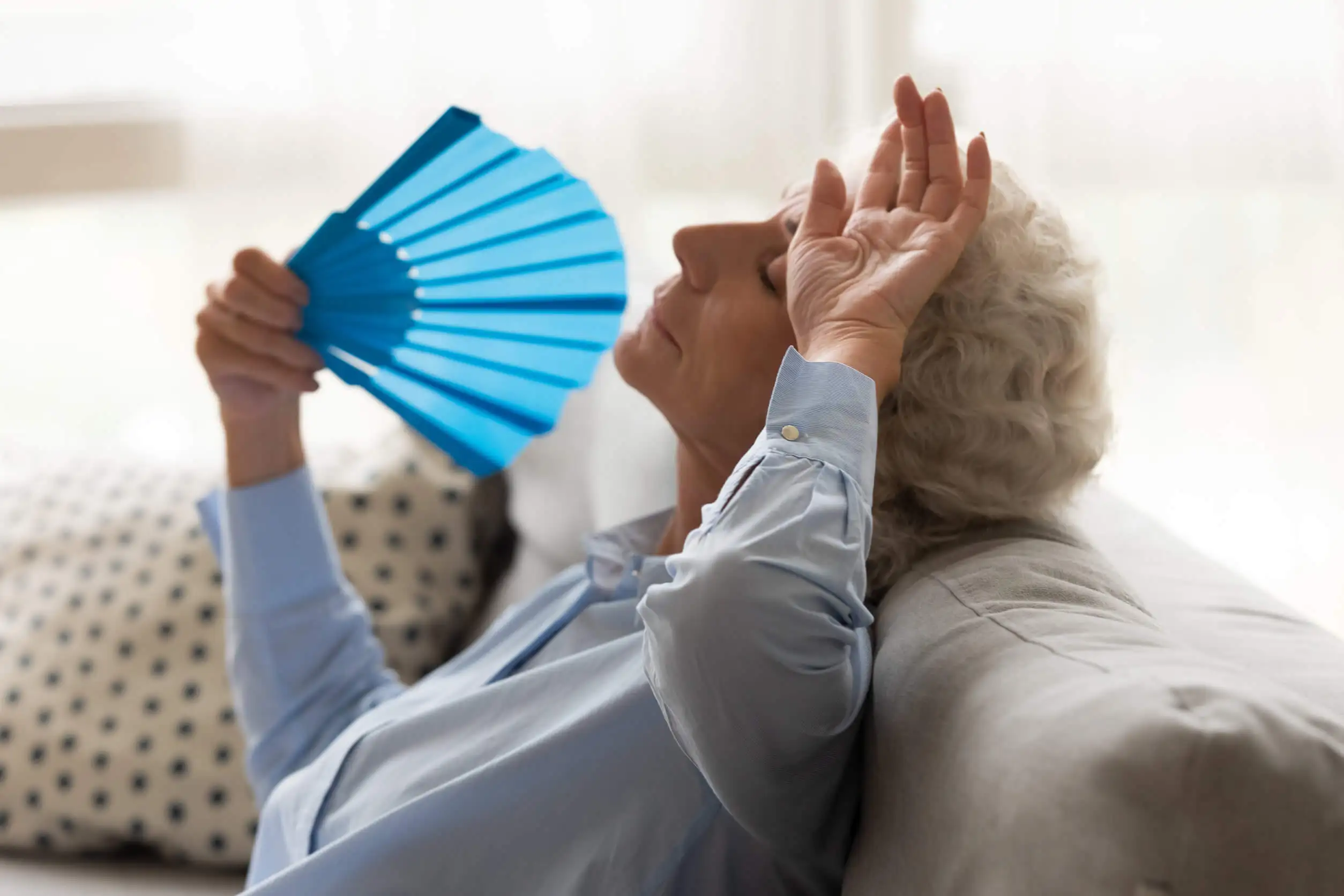8 Conditions Related to High Temperatures


Reviewed and approved by the nurse Leidy Mora Molina
There are different conditions related to high temperatures that can be triggered in summer, especially when there are heat waves.
It’s possible to experience a variety of symptoms, such as the following:
- Excessive sweating
- Dehydration
- Cramps
- Feeling of exhaustion
- Dizziness
- Tachycardia
- Fainting spells
Thus, precautions should be taken when the thermometer approaches or exceeds 40° Celsius. If the above-mentioned symptoms manifest themselves, prompt action should be taken to avoid complications.
Symptoms caused by heat
Whether in the northern or southern hemisphere, with the arrival of summer, the temperature begins to rise. However, some years are hotter than others due to various climatic phenomena such as El Nino.
It’s normal for the body to cool down through sweating. Sometimes, however, the body is unable to get rid of the heat overload at a sufficiently rapid rate, and thermal equilibrium is lost.
The body temperature then rises to levels that can become dangerous, giving rise to a variety of symptoms:
- Dizziness
- Tachycardia
- Delirium and confusion
- Thirst that is difficult to quench
- A feeling of fatigue and weakness
- Skin rashes and redness
- Oliguria (reduced urine production)
- Sudden rises and falls in blood pressure
- Anhidrosis or hyperhidrosis (decrease or exaggerated production of sweat, respectively)

Causes and risk factors
As the degrees marked by the thermometer rise, the possibility of experiencing problems with heat increases. From 35° C onwards, discomfort may be felt.
In turn, it increases when you are exposed to heat for a long time. For example, when working or exercising outdoors, or if you don’t use any implement that helps to dissipate or reduce the temperature.
On the other hand, some people are more sensitive. Among the risk factors that predispose to suffer conditions related to high temperatures, the following are mentioned:
- Alcohol intake
- People with obesit
- Low or inadequate hydration
- People who are accustomed to cold climates
- Very young children and older adults
- People with hypertension and cardiovascular diseases
- Consumption of some drugs (beta-blockers, diuretics, antidepressants)
Like this article? You may also like to read: How Extreme Temperatures Affect the Human Body
Conditions related to high temperatures
Some of the symptoms mentioned above may be common to the various conditions related to high temperatures. However, each has its own particularity. Let’s take a closer look.
1. Sunstroke
The terms sunstroke and heat stroke are often used interchangeably. However, there are experts who establish differences between both, pointing out that heat stroke is usually the precursor of sunstroke and that it doesn’t produce cognitive alterations.
On the other hand, it’s also stated that sunstroke is the result of prolonged exposure to the sun, so it’s characterized by skin sensitivity, damage, and affection. Although dehydration, general malaise, headache, nausea, tachycardia, and irritability are also present.
2. Heat stroke
Heat stroke is one of the riskiest conditions related to high temperatures. It occurs when the body exceeds the 40° C or 104° F barrier.
It’s noted that there are two basic types of heat stroke:
- Exertional heat stroke: This is the result of sustained physical activity in a very hot and humid environment. It develops in a short period of time. For example, it may occur during a marathon competition.
- Non-exertional heat stroke: This occurs when the rise in ambient temperature is coupled with other conditions, such as age or underlying health problems. It develops over several days.
In general, symptoms of heat stroke include dehydration, fatigue, feelings of confusion, tachycardia, and dizziness. If left unattended, convulsions, fainting, and even a coma and death can occur.
3. Conditions related to high temperatures: Dehydration
To combat high temperatures, the body produces sweat. And if the situation is maintained, there will be more sweating. When this is not compensated with adequate fluid replacement, dehydration occurs.
All this leads to other short- and long-term complications, such as dry and cracked lips, disorientation and confusion, tachycardia, constipation, and kidney problems, among others.
4. Heat exhaustion
After a period of time exposed to heat, the person may experience a feeling of fatigue that translates into difficulty in performing any activity, feeling that the slightest movement demands a great effort.
5. Cramps
With sweating, the body also loses salts and minerals required for normal functioning. This includes chlorine, sodium, potassium, and magnesium, which play an important role in muscle function
Because of this, muscle spasms and cramps can occur in the arms and legs, as well as other parts of the body, even in the abdomen. This is something that also often occurs after intense physical exercise.
6. Skin conditions
The rash is a skin condition that looks like red bumps or small blisters. It’s most common in the folds of the body (armpits, groin).
It’s usually caused by a substance that’s irritating the skin, as well as excessive sweating and clogged pores. It’s common in children, especially when the environment is warm and humid.
It causes inflammation, irritation, itching, burning, dryness, and flaking. In addition to the discomfort it generates, there may be complications due to infections.
7. Gastrointestinal diseases
Gastrointestinal diseases are more frequent in hot weather. On the one hand, food decomposes more quickly, increasing the bacteria in it.
Likewise, flies and other insects tend to multiply more in hot weather. This is especially true in places where there aren’t adequate sanitary conditions.
8. Kidney problems
With the loss of fluids, urination frequency decreases. This can lead to various consequences, such as increased uric acid levels.
According to a review on the subject, it has been found that heat waves increase the risk of kidney failure, with children, older adults, people with disabilities, and people with various chronic diseases being the most affected.

The consequences and possible complications
When the body overheats, blood vessels dilate, forcing the heart to beat faster and with more power. This, in turn, affects the muscles and the functioning of vital organs, including the brain.
Complications related to increased temperature include the following:
- Hyperventilation
- Acute respiratory distress
- Renal and hepatic failure
- Metabolic dysfunction
- Hypovolemic shock
Additionally, there are some conditions that can be aggravated by heat, such as skin conditions (acne, rosacea), respiratory conditions (COPD, asthma), diabetes mellitus, and lupus.
We think you may also enjoy reading this article: The Relationship Between Body Temperature and Fever
Preventing high temperature-related conditions
If the necessary measures are taken, these high temperature-related conditions can be avoided or prevented. In this regard, several recommendations should be taken into account.
We should be attentive to weather forecasts, drink enough fluids, and avoid exposure to the sun at peak hours. It’s also best to wear a hat or cap when going outdoors; meanwhile, stay in cool and ventilated environments.
Taking a shower if you’re very hot is also great. You should avoid or reduce your exercise in extreme heat and also make sure to avoid wearing warm clothes.
As for meals, don’t eat food on the street, disinfect fruits and vegetables well, and avoid large, very hot or greasy meals.
You should also reduce your intake of alcohol and caffeine.
At home, use the necessary devices for cooling, such as fans and air conditioners. Also, use the oven as little as possible.
When to go to the doctor
Medical help should be sought if the temperature is very high and several of the above symptoms are present. While first aid personnel arrives, you can help lower the person’s temperature by applying ice packs or ice compresses to areas such as the armpits, groin, and neck.
If possible, bathe or at least spray the person experiencing heat stroke with water. Also, help to remove clothing. Another important measure is hydration with isotonic drinks.
Immediate medical attention is essential when heat stroke occurs. If it can be treated in time, there’s no need to fear any complications. When you have family members who live alone, you should keep in permanent contact with them to know how they are doing.
All cited sources were thoroughly reviewed by our team to ensure their quality, reliability, currency, and validity. The bibliography of this article was considered reliable and of academic or scientific accuracy.
- Fleta Zaragozano J, González García G, Muñoz Jalle E, Faci Alcalde E, Aurensanz Clemente E. Golpe de calor. Boletín de la Sociedad de Pediatría de Aragón, La Rioja y Soria. 2013; 43(2): 53-59.
- Kovats R. El Niño and human health. Bulletin of the World Health Organization. 2000; 78 (9): 1127-1135.
- Lorenzo, A, Liano F. High temperatures and nephrology: The climate change problem. Nefrología (Madr.). 2017; 37(5): 492-500.
- Peña R, Valdés M, Nazzal C. Efecto de las temperaturas extremas en la incidencia de enfermedades cardiovasculares: revisión bibliográfica 2016-2022. Rev Chil Cardiol. 2022; 41(1): 51-64.
- Piñeiro Sande N, Martínez Melgar J, Alemparte Pardavilla E, Rodríguez García J. Golpe de Calor. Revisión. Emergencias. 2004; 16: 116-125.
- Villamil Cajoto I, Díaz Peromingo J, Villacian Vicedo G, Sánchez Leira J, et al. Impacto de la ola de calor de 2003 en el Hospital de Riveira (A Coruña). An. Med. Interna (Madrid). 2005; 22(1): 15-20.
This text is provided for informational purposes only and does not replace consultation with a professional. If in doubt, consult your specialist.








